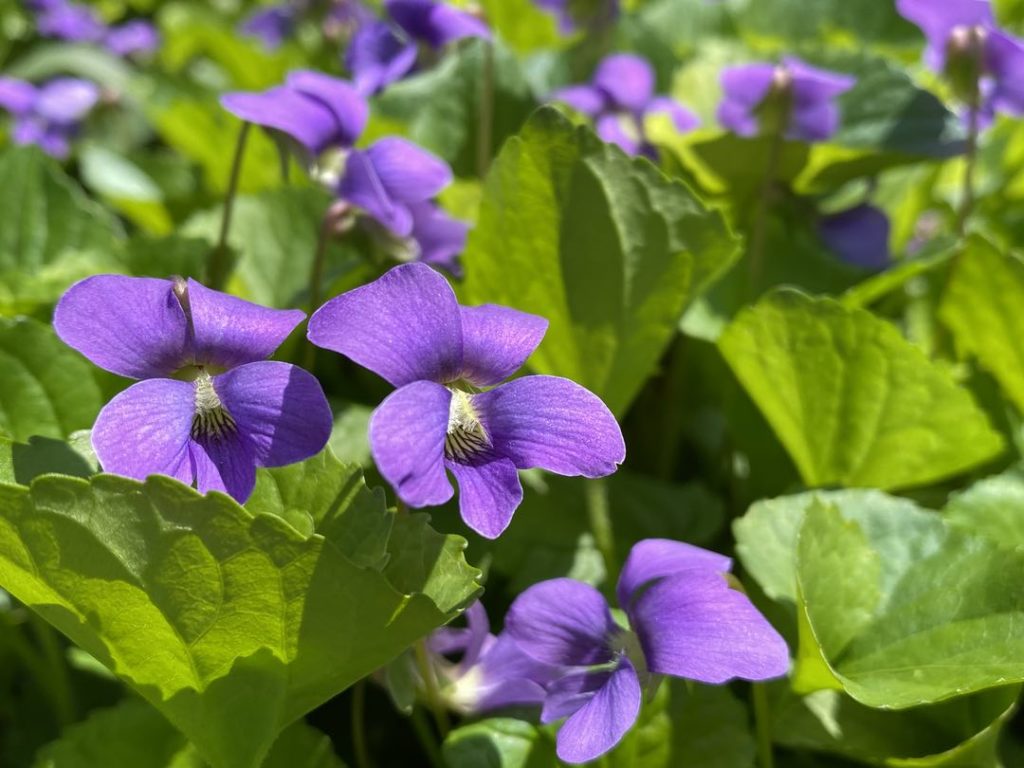
Albania
Violets
Viola Odorata

General Description / Cultural Significance
Violets (Viola odorata), native to the hills and mountain sides of Albania, are hardy evergreen herbs beloved for their sweet fragrance and broad medicinal utility, as well as their use in historical folk rituals. Pharmacological extracts of violets are regarded as safe and essential natural medicines, possessing a number of anti-inflammatory, antifungal, antioxidant, and antipyretic agents that have brought humans pain relief and health for centuries. Each leafless stem of viola odorata grows to approximately 20.32 centimeters (8 inches) in height and has a single flower with highly fragrant dark blue-purple, sometimes white, petals. As the name suggests, characteristic constituents of the flowers are the colored pigment anthocyanins that carry the flavonoid, saponoid and alkaloid ingredients that give such pharmaceutical and health benefits. In Albanian society, the blooming of violets has spiritual significance and is seen as a rite of summer.
On March 14th every year, Albanians celebrate their culture’s most important holiday Dita e Verës, “The Summer Day,” one that has been celebrated since pagan times. In the old Julian calendar, Verëza corresponded to the first three days of the new year. Today, it symbolizes the end of winter and the beginning of the summer season. Since ancient times, people in the region have celebrated the rebirth of nature with this festival of flowers that focuses on rituals centering around violets, such as washing one’s face with violet water. The festival is celebrated across the country and specific traditions vary among the towns. What was once a native festival now draws people from around the world. The importance of violets carries on through the summer and from generation to generation, as children traditionally gather them to give to their parents and lovers to each other. The culture is laden with references to the violet in song, poetry, and literature. It is also a popular name for girls, which is Manushaqe in Albanian.
Climate Change / Conservation Status
Albania is primarily a mountainous landscape with abundant lakes and rivers and a biodiverse ecosystem along the Adriatic and Ionian coastlines, which have become extremely vulnerable to coastal erosion and rising seas. In tandem with geological erosion, air quality and high temperatures threaten the quality of life for all native species in the region. Currently, nineteen percent of native Albanian flora and fauna species are endangered due to habitat loss, human intrusion, and overfishing. Extreme weather events such as droughts and floods cause immense strain on the health of Albania’s plant life and the lack of consistent rain has led to a record-breaking number of forest fires, further damaging the fragile ecosystems. It is not only the forests that suffer, as the frequency of respiratory diseases, transmission of infectious diseases, and heat related deaths increase in correlation with rising temperatures and pollution.
Though climate change continues to affect the mountains and coastal regions of Albania, violets such as Viola Odorata, adapted to survive in harsh conditions long ago through metal exclusion, which limits the levels of heavy metal translocation within body of the plant and helps to maintain relatively low levels in their shoot over a wide range of soil levels. This adaptation has helped a large number of violet species stay off of the endangered species list, while still growing in unfavorable soil. That said, more could always be done to ensure that violets can withstand the effects of logging, grazing, and human gathering, as their current resilience is a fortunate byproduct of their evolution and the long-term effects of climate change are still unknown.
Alternate Names
Banafshah
Common Violet
English Violet
Fleur de Mars
Garden Violet
Herba Violae
Manushaqja
Neelapushpa
Sweet Violet Herb
Sweet Violet Root
Viola odorata
Violae Odoratae Rhizoma
Viole de Carême
Violet
Violeta
Violette Commune
Violette des Haies
Violette de Mars
Violette Odorante
Violette à Parfum
Violier Commun
Wild Violet
Wood violet
Zi Hua Di Ding
Sources
ClimateChangePost, n.d. Climate change in Albania. Centre for Climate Adaptation. [website]
Climate Links, 2016. Climate Risk Profile: Albania. US Agency for International Development. [website]
Embassy of Albania, Washington, D.C. This statement can be found on the World Sensorium original website.
Tirana Times, 2018. Albania climbs 10 spots to rank 83rd globally in innovation. Tirana Times. [website]
The World Bank, 2013. Climate Change in Albania. World Bank Group. [website]
World Health Organization Europe, 2019. Albania. World Health Organization. [website]

